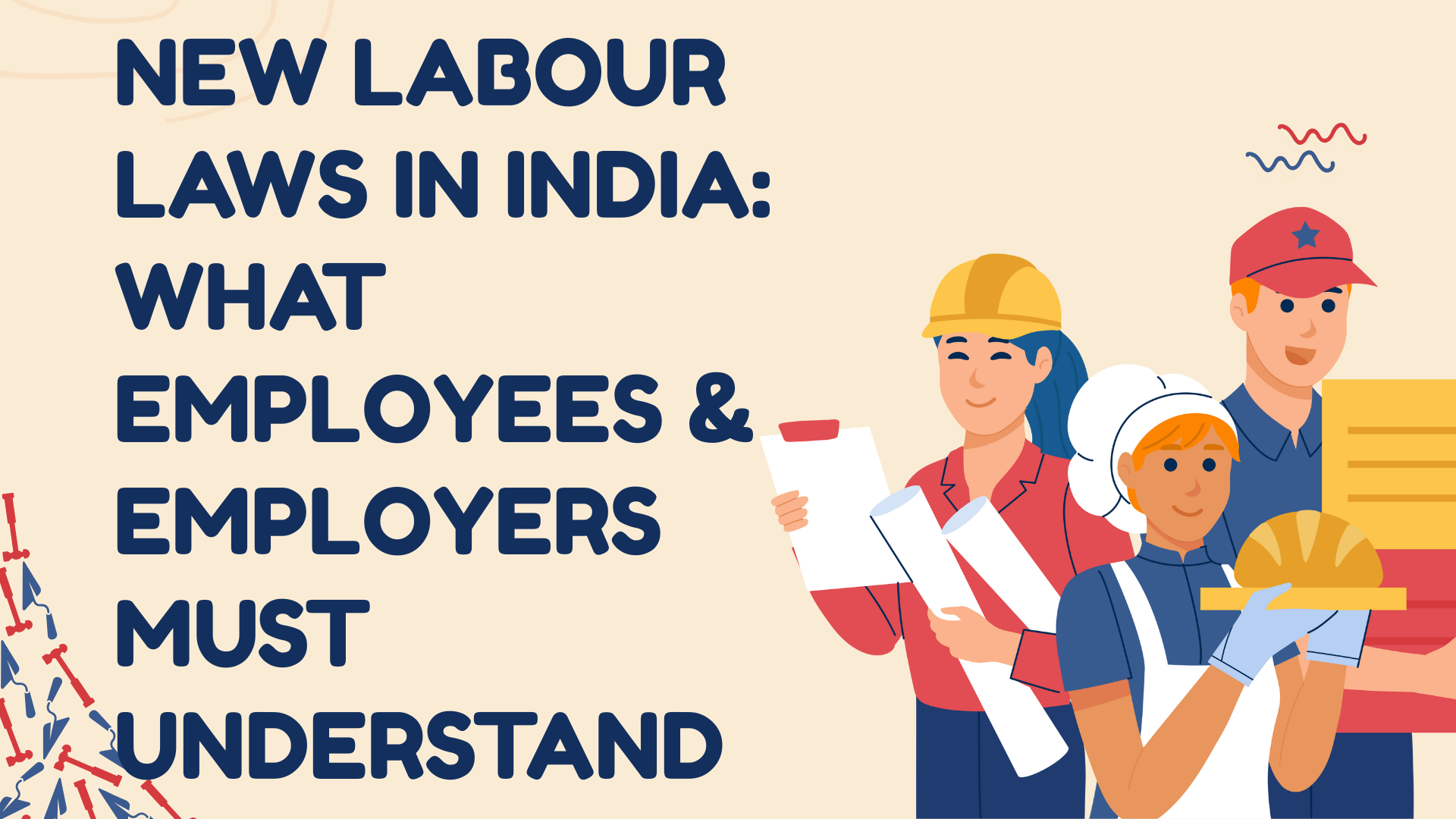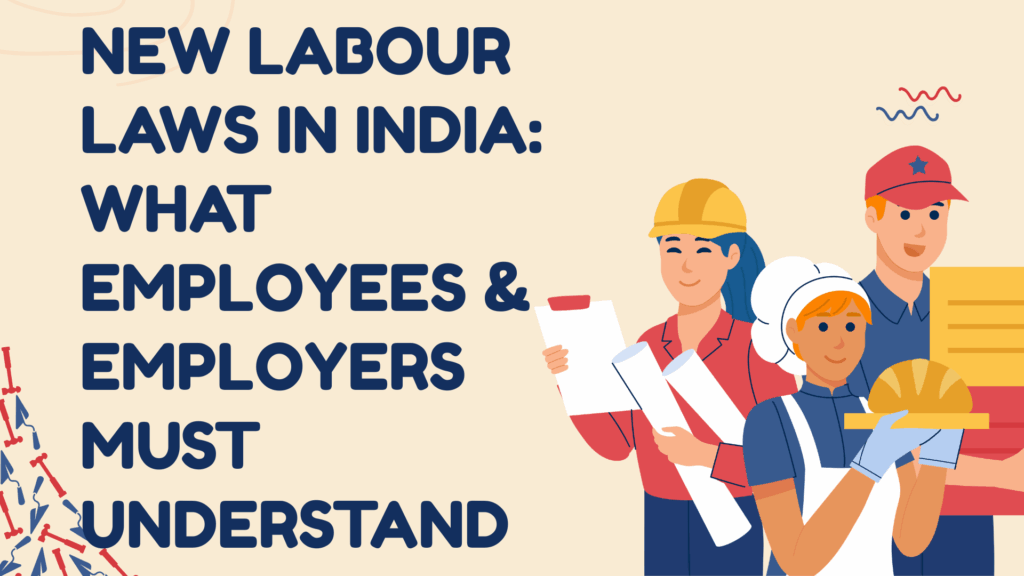Read this post and get to know about the New Labour Laws in India 2025: What Employees & Employers Must Understand has been discussed here in detail.
New Labour Laws in India 2025
India is finally going on with the long-awaited changes to its labor laws in 2025. The goal is to update and simplify the country’s complicated and out-of-date labor rules. The government has combined 29 central labor regulations into 4 labor codes:
- Code on Wages
- Social Security Code
- Code for Industrial Relations
- Code for Health, Safety, and Working Conditions in the Workplace
These changes are important for both workers and businesses since they affect things like hours worked, pay, social security, and following the rules. In 2025, India will have new labor laws. This article goes into depth on the most important parts of the rules and what each side needs to know.
Why Changes to Labor Laws Were Necessary
Businesses had a hard time following India’s old labor regulations since they were old and overlapping, which confused employees. The new codes are meant to:

- Make it easier to do business
- Make sure that all workers have the same rights in all fields
- Make workers’ health and safety better
- Promote formal employment and social security benefits
Summary of the Four New Labour Codes (2025)
| Labour Code | Replaces | Key Focus |
|---|---|---|
| Code on Wages | 4 wage-related laws | Minimum wage, equal pay, timely payment |
| Code on Social Security | 9 social security laws | Provident fund, ESI, maternity, gratuity |
| Industrial Relations Code | 3 laws including ID Act, Trade Unions Act | Strikes, layoffs, trade union recognition |
| Occupational Safety & Health Code | 13 safety and welfare laws | Workplace safety, working conditions, inspections |
Important Changes for Workers
1. A standard minimum wage
The Code on Wages sets a nationwide minimum wage, which means that every state has to pay the same amount. Employers can no longer pay less than this amount.
2. Hours of Work and Overtime
Employees can now work four days a week (12-hour shifts), which gives them three days off. However, the 48-hour weekly maximum still stands. The laws on overtime have been made clearer, and workers will get paid more for working extra hours.
3. More coverage from Social Security
The Code on Social Security now covers gig workers, platform workers, and employees in the unorganized sector. These benefits include:
- PF (Provident Fund)
- Employees’ State Insurance (ESI)
- Gratuity
- Maternity and disability benefit
4. Paying wages on time
All sorts of jobs must pay their employees on time, whether it’s monthly, biweekly, or weekly.
Important Changes for Employers
1. One License, Online Registration
The codes provide a single compliance system that replaces several registrations with a single license for many locations and lets people file their taxes online.
2. Easier layoffs and cuts
The Industrial Relations Code now allows companies with up to 300 employees (up from 100) to fire or lay off workers without first getting permission from the government.
3. Employment for a Set Period of Time
Employers may now engage workers on fixed-term contracts with the same perks (PF, gratuity) as permanent personnel, which makes things more flexible.
4. Making records digital
Employers must keep digital records of attendance, pay, health, and safety audits to make things more open and cut down on inspections.
Challenges and Concerns
Critics have raised concerns about the revisions, which are meant to make labor rules easier to understand and promote formal employment. These issues include:
Possible abuse of longer daily hours
Fixed-term contracts make jobs less stable.
New laws for industrial relations limit the bargaining ability of unions.
No obvious ways to enforce protections for gig economy workers
What Workers and Employers Must Do Now
Employees must:
Check to see whether their pay structure meets the new rules
Make sure that you have signed up for PF, ESI, and other social security programs.
Know what their rights are when it comes to work hours, vacations, and contracts.
Employers must:
Revise HR rules and contracts for employment
Make records of wages and attendance digital
Sign up for government compliance portals
Teach the new codes to the HR and compliance staff.
Final Thoughts
The New Labour Codes of India (2025) mark a significant transformation in the nation’s employment legislation, striving to harmonize worker protection with business adaptability. To make sure compliance, reduce conflicts, and help create a fair and productive work environment, both employees and employers need to be proactive.
Knowing these regulations is not only a legal obligation, but it is also a smart move in the current Indian economy.
We really appreciate you taking the time to read this item on our site.





